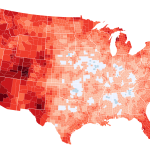The U.S. Government’s Golden Hoard: A Lesson in Resource Management?
The United States government sits on a mountain of gold. Literally. Across three heavily secured locations – Denver, Fort Knox, and West Point – the U.S. Treasury boasts a reserve of 248,046,115.696 troy ounces of gold, a staggering sum worth over $865 billion at current market prices. While the precise value fluctuates with market conditions, the sheer scale of this hoard is undeniable. This raises a pertinent question: if the government can meticulously safeguard this precious metal, why not apply similar strategies to address the pressing issue of carbon emissions and climate change? The analogy, while seemingly disparate, highlights a crucial point about national resource management.
Beyond the Gold Standard: A New Kind of National Security?
The rationale behind amassing and protecting this gold reserve is rooted in history, specifically the now-abandoned gold standard. President Richard Nixon’s decision in 1971 to sever the link between the U.S. dollar and gold effectively rendered the massive gold reserves largely symbolic. While the gold itself retains its inherent value, its function as a guarantor of currency has ceased. The continued storage, therefore, speaks volumes about national priorities and the perceived value of maintaining a physical manifestation of wealth and stability, even in the absence of direct economic utility. Could this same dedication to secure storage be applied to a different kind of “treasure” – the captured carbon dioxide driving climate change?
Carbon Sequestration: A Fort Knox for Greenhouse Gases?
The parallel between gold storage and carbon sequestration is not merely a thought experiment. The meticulous security and logistical prowess required to manage the nation’s gold reserves could serve as a blueprint for large-scale, secure carbon capture and storage (CCS) initiatives. CCS technologies, while still under development and facing challenges in terms of cost and scalability, offer the potential to significantly reduce atmospheric carbon dioxide levels. Just as Fort Knox guarantees the security of a national asset, strategically located and secured carbon storage facilities could provide a solution to the climate crisis, ensuring the safe and long-term containment of greenhouse gases. The government’s experience in managing high-value, high-security assets could prove invaluable in this endeavor. This would require significant investment in infrastructure and technological advancements, but the potential environmental benefits could be enormous.
Conclusion: A Call for Strategic Resource Allocation
The U.S. government’s unwavering commitment to the security of its gold reserves serves as a stark reminder of its capacity for long-term strategic planning and resource management. While the gold’s economic function has changed, its symbolic and potentially strategic value remains. Applying this same dedication and logistical expertise to the critical challenge of climate change, through the development and deployment of secure carbon sequestration facilities, represents a vital opportunity. The nation’s capacity to safeguard billions of dollars’ worth of gold suggests that a similar commitment to securing the planet’s future is both achievable and essential. The question is no longer whether we
can
store carbon securely, but whether we have the political will to match our commitment to gold with an equally robust commitment to environmental stewardship.
Based on materials: Vox





